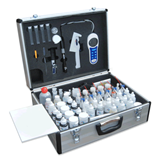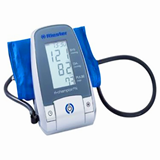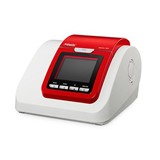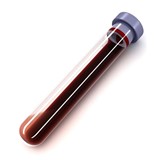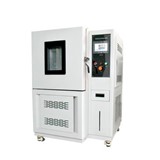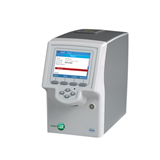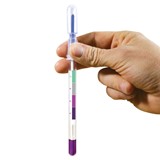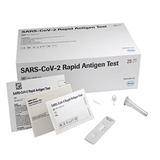Key Takeaways: Your essential guide to pulmonary function test machines
For healthcare professionals and facilities needing the vital facts on PFT machines, fast, here are the critical insights for 2025:
- Growing Demand: The global respiratory diagnostics market is projected to reach USD 10.5 billion by 2030, with Australia experiencing a rising prevalence of respiratory diseases, underscoring the need for advanced PFT capabilities.
- Core Functions: All PFT machines measure essential lung volumes and flow rates (e.g., FEV1, FVC, PEF). Advanced systems add diffusion capacity (DLCO), lung volumes (body plethysmography), and bronchial challenge testing.
- Price Points:
- Spirometers: Portable handheld units from $1,500 - $5,000. Desktop spirometers from $5,000 - $15,000.
- Full PFT Labs: Integrated systems with DLCO and plethysmography range from $70,000 - $200,000+.
- Operational Costs: Expect annual calibration costs of $500 - $1,500, consumables (mouthpieces, filters) at $0.50 - $3.00 per test, and software licensing of $500 - $2,000 annually.
- Australian Compliance: Ensure machines meet TGA (Therapeutic Goods Administration) ARTG listing and comply with ANZSRS (Australian and New Zealand Society of Respiratory Science) guidelines for quality and spirometry standards.
- Business Case (ROI): Generate a clear ROI through MBS Item 11505 (Spirometry), which provides a patient rebate of ~$45.80 per test, turning your PFT machine into a revenue-generating asset.
- Implementation & Training: Effective implementation is critical; ensure your supplier provides on-site training and that your staff's competency aligns with ANZSRS standards to guarantee accurate and reliable results from day one.
Your essential buying guide to pulmonary function test machines in Australia
With respiratory conditions like asthma and COPD on the rise in Australia, accurate pulmonary function testing (PFT) is more critical than ever. A PFT machine is a key diagnostic tool for measuring lung health, enabling clinicians to diagnose, monitor, and manage a wide array of respiratory illnesses.
Choosing the right device, from a simple handheld spirometer to a full diagnostic lab, requires a clear understanding of technology, ongoing costs, and Australian compliance. This streamlined guide provides the essential information to help you make an informed investment in patient care.
Types of PFT machines and price points
Your clinical needs will determine the type of machine you require.
Spirometers (The Foundation of PFT):
Spirometry is the most common PFT, measuring how much air you can breathe in and out, and how fast.
- Portable/Handheld Spirometers: Compact units for quick screenings in general practice or at the bedside. Price: $1,500 - $5,000.
- Desktop/PC-Based Spirometers: More robust units that connect to a computer for detailed analysis, data management, and reporting. Ideal for diagnostic settings. Price: $5,000 - $15,000.
Full Pulmonary Function Testing Systems
These integrated systems offer comprehensive tests for specialised respiratory clinics and hospitals
- Spirometry + Diffusion Capacity (DLCO): Adds the ability to measure how well the lungs transfer gas into the blood, crucial for diagnosing conditions like emphysema or pulmonary fibrosis. Price: $40,000 - $90,000.
- Spirometry + DLCO + Lung Volumes (Body Plethysmography): The "gold standard." Uses an enclosed cabin to provide the most accurate lung volume measurements, essential for complex diagnoses. Price: $70,000 - $200,000+.
Operational and financial considerations
Beyond the purchase price, consider these crucial factors:
- Calibration: Accuracy depends on regular calibration. A daily check with a 3-litre syringe is standard practice. A professional annual calibration service is also essential, costing $500 - $1,500.
- Consumables: For infection control, every test requires disposable items. Budget for bacterial/viral filters and mouthpieces, which typically cost $0.50 - $3.00 per test.
- Software & EMR Integration: Ensure the machine's software is user-friendly and can integrate seamlessly with your existing Electronic Medical Records (EMR) system (e.g., MedicalDirector, Best Practice) to save time and reduce errors.
- Maintenance & Warranty: Daily cleaning is crucial. Budget for an annual preventative maintenance service ($800 - $2,500 for full systems) to ensure longevity. Standard warranties are typically 1-2 years; ask about extended options.
- Financing: For Australian businesses, a Chattel Mortgage is often the most tax-effective financing option. It allows you to claim the GST upfront and deduct interest and depreciation. Consult your accountant for tailored advice.
Australian compliance and certification
Operating medical devices in Australia requires adherence to strict regulations.
- TGA Registration: The device must be listed on the Therapeutic Goods Administration's (TGA) Australian Register of Therapeutic Goods (ARTG). Verify this with your supplier.
- ANZSRS Guidelines: The machine's software and operation should align with the standards set by the Australian and New Zealand Society of Respiratory Science (ANZSRS) to ensure quality and consistency in testing.
- NATA Accreditation: Ensure any company performing your annual calibration service is accredited by the National Association of Testing Authorities (NATA).
Building the business case: ROI and MBS item numbers
A Pulmonary Function Test (PFT) machine isn't just a clinical tool; it's a revenue-generating asset for your practice. In Australia, the path to a strong return on investment (ROI) is clearly defined by the Medicare Benefits Schedule (MBS), which provides specific rebates for respiratory function tests.
Understanding these item numbers is the first step in justifying your capital expenditure. As of August 2025, the key MBS item numbers you'll use are:
- MBS Item 11505 (Complex Lung Function Testing / Spirometry): This is your most frequently used item. It covers the measurement of expired vital capacity and forced expiratory volume, both pre- and post-bronchodilator.
- Current Rebate (Patient): $45.80
- MBS Item 11503 (Measurement of Diffusion Capacity - DLCO): For machines with DLCO capability, this item covers the measurement of gas transfer in the lungs, a crucial test for more complex conditions.
- Current Rebate (Patient): $76.15
Calculating your ROI
To build your business case, you can create a simple forecast. For example, if your clinic performs just five spirometry tests (11505) per week, you would generate approximately $229 per week, or over $11,900 per year in revenue from that service alone.
By factoring in the machine's purchase price, ongoing costs (consumables, servicing), and your anticipated patient load, you can accurately project how quickly the equipment will pay for itself and become a profitable part of your practice.
Disclaimer: MBS rebates are subject to change. Always consult the official MBS Online schedule for the most current information and billing requirements.
Implementation & staff training checklist
Your new PFT machine is only as effective as the team operating it. A smooth implementation and thorough training process are crucial for ensuring you get accurate, reproducible results from day one. Use this checklist to guide you from purchase to proficient use.
Phase 1: Pre-Installation
- Confirm Space & IT Requirements: Does your chosen location have adequate space, ventilation, and the necessary power outlets? Confirm IT requirements (e.g., dedicated PC, network ports) with the supplier and your IT support.
- Check EMR Integration Plan: Confirm with your supplier and your EMR provider (e.g., MedicalDirector, Best Practice) that a clear plan for software integration is in place.
- Order Initial Consumables: Make sure you have an adequate starting stock of bacterial/viral filters, mouthpieces, and calibration syringe supplies before the machine arrives.
Phase 2: Installation & Setup
- Schedule Supplier Installation: Have the supplier's technician perform the initial installation and setup. Don't try to do this yourself, as it can void the warranty.
- Perform Initial Calibration: Observe the technician performing the first full calibration and ask questions. Ensure you understand the daily calibration process.
- Test EMR Data Transfer: Once integrated, run several test patients to ensure data is flowing correctly to your EMR, saving reports, and billing information is being captured.
Phase 3: Staff Training & Competency
- Schedule Dedicated Training Time: Book protected time for all relevant clinical staff to attend the supplier's initial training session. Avoid trying to squeeze it in between patient appointments.
- Appoint a "Super User": Designate one or two staff members to be the primary operators or "super users." They can receive more in-depth training and act as the go-to resource for the rest of the team.
- Focus on ANZSRS Standards: Ensure your training covers the specific procedural standards set by the Australian and New Zealand Society of Respiratory Science (ANZSRS) for performing high-quality spirometry. This is the benchmark for clinical best practice in Australia.
- Develop a Competency Checklist: Create a simple checklist for new operators to complete, covering key skills like patient coaching, performing a correct calibration, and identifying an acceptable test result. This ensures a consistent quality of testing across your practice.
Common questions from PFT machine buyers
Q1: How often do PFT machines really need to be calibrated?
A daily check with a 3-litre calibration syringe is the standard for ensuring accuracy. A full professional calibration and preventative maintenance service must be performed annually.
Q2: What are the main ongoing costs I should budget for?
The three primary ongoing costs are consumables (filters and mouthpieces for each test), the annual professional servicing and calibration fee, and any recurring software license fees.
Q3: Can these machines connect to my clinic's EMR system?
Yes, most modern PFT machines are designed for EMR integration. However, you must confirm that the specific model you choose is compatible with your clinic's software (e.g., MedicalDirector, Best Practice) before you purchase.
Q4: Do I need a full PFT lab or is a spirometer enough?
A spirometer is sufficient for screening, primary care diagnostics, and monitoring known conditions. A full PFT lab is necessary for specialised respiratory clinics and hospitals that diagnose complex diseases requiring precise lung volume and gas exchange measurements.
Conclusion: An investment in precise respiratory care
Choosing the right PFT machine is a critical investment in your facility's diagnostic capabilities. By focusing on your clinical needs, understanding the full scope of operational costs, and ensuring strict adherence to Australian TGA and ANZSRS compliance, you can confidently select a device that will provide accurate, reliable results and enhance patient care for years to come.


